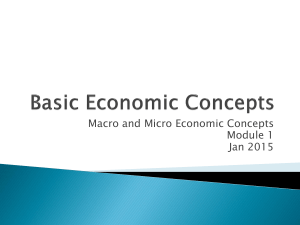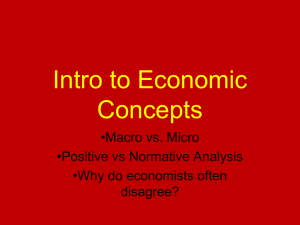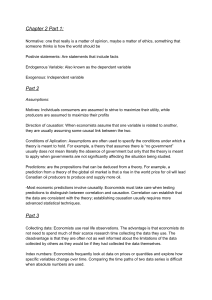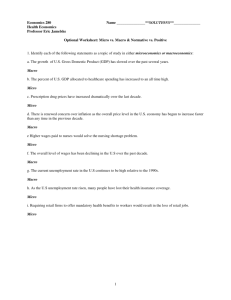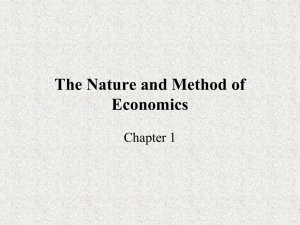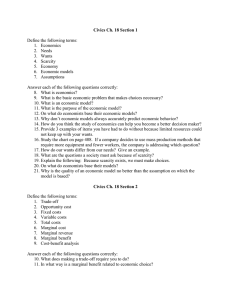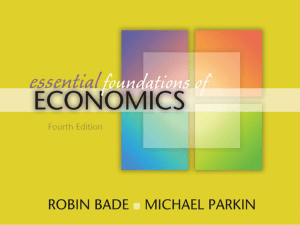File
advertisement
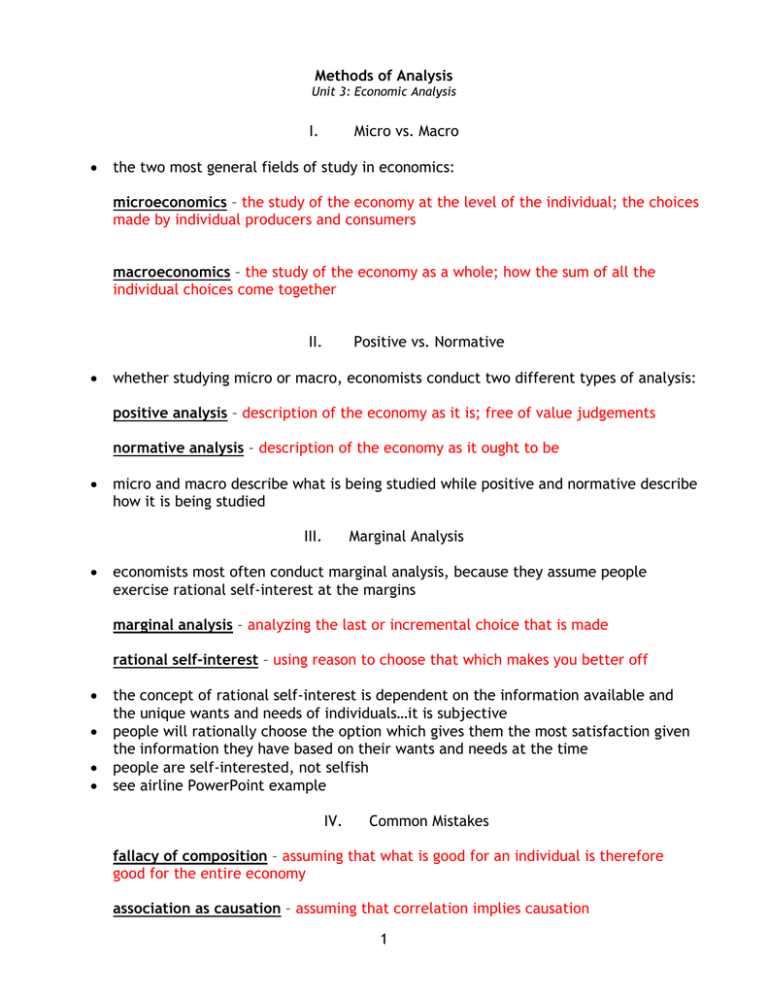
Methods of Analysis Unit 3: Economic Analysis I. Micro vs. Macro the two most general fields of study in economics: microeconomics – the study of the economy at the level of the individual; the choices made by individual producers and consumers macroeconomics – the study of the economy as a whole; how the sum of all the individual choices come together II. Positive vs. Normative whether studying micro or macro, economists conduct two different types of analysis: positive analysis – description of the economy as it is; free of value judgements normative analysis – description of the economy as it ought to be micro and macro describe what is being studied while positive and normative describe how it is being studied III. Marginal Analysis economists most often conduct marginal analysis, because they assume people exercise rational self-interest at the margins marginal analysis – analyzing the last or incremental choice that is made rational self-interest – using reason to choose that which makes you better off the concept of rational self-interest is dependent on the information available and the unique wants and needs of individuals…it is subjective people will rationally choose the option which gives them the most satisfaction given the information they have based on their wants and needs at the time people are self-interested, not selfish see airline PowerPoint example IV. Common Mistakes fallacy of composition – assuming that what is good for an individual is therefore good for the entire economy association as causation – assuming that correlation implies causation 1
